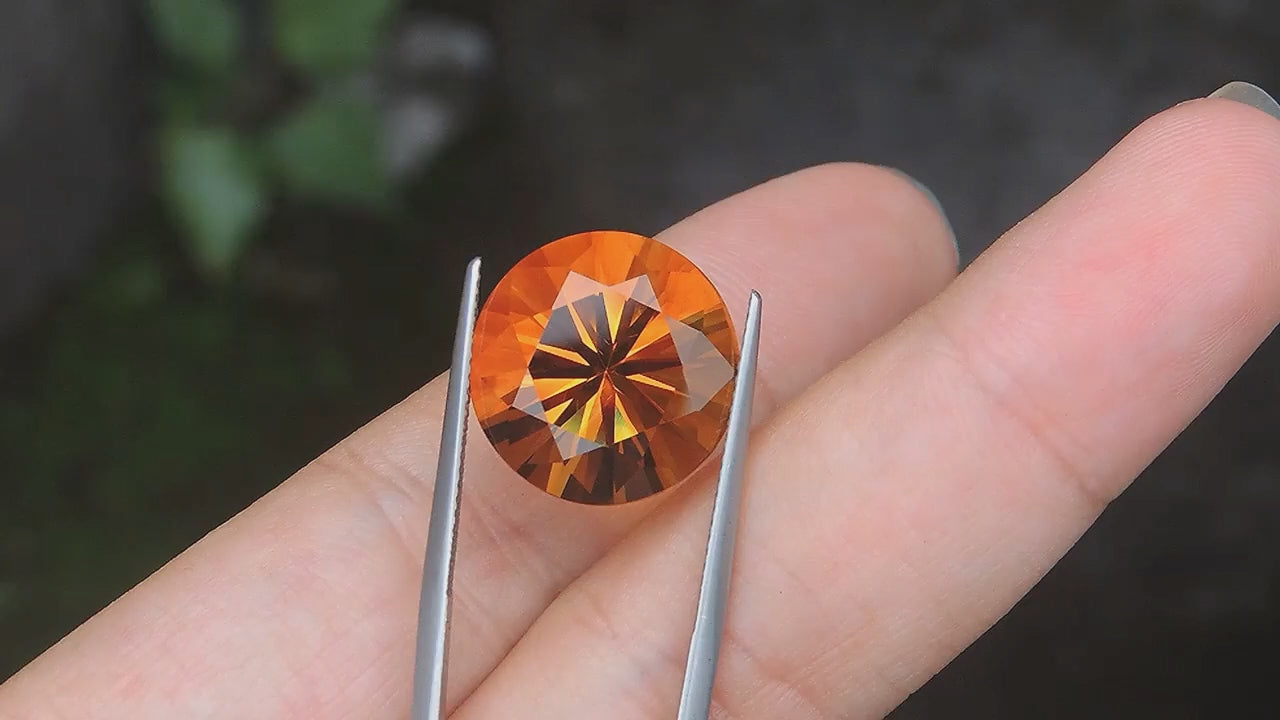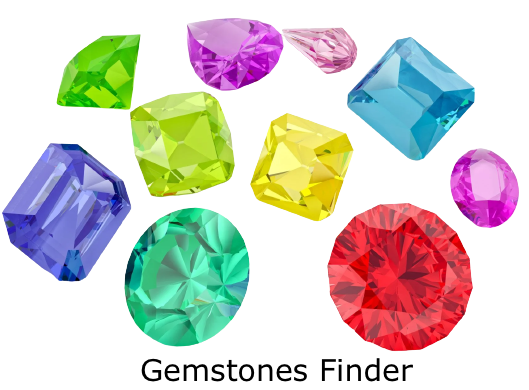Citrine
Citrine Gemstones Collection - Authentic Rough Citrine & Cut Citrine Stones
Welcome to Gemstones Finder's exclusive Citrine collection, featuring the finest quality citrine gemstones sourced directly from renowned mining locations worldwide. Our collection showcases authentic rough and cut citrine stones from Brazil, Bolivia, Madagascar, and other premium sources known for their golden beauty.
What Gemstones Finder Offers in Citrine Collection:
- Premium Rough Citrine: Uncut natural specimens perfect for collectors and lapidary work
- Faceted Cut Citrine: Professionally cut gemstones ready for jewelry setting
- Natural Citrine: Authentic unheated specimens with natural golden colors
- Heat-Treated Citrine: Enhanced amethyst creating vibrant golden hues
- Healing Grade Crystals: Metaphysical quality citrine for spiritual practices
- Abundance Stones: November birthstone citrine in various sizes and cuts
- Bulk Wholesale Options: Competitive pricing for dealers and jewelry manufacturers
Citrine as a Healing Stone - Metaphysical Properties
Citrine loose gems are renowned in crystal healing for their powerful metaphysical properties:
- Solar Plexus Chakra Activation: Enhances personal power and self-confidence
- Abundance & Prosperity: Attracts wealth, success, and financial opportunities
- Mental Clarity: Improves focus, concentration, and decision-making
- Emotional Healing: Dispels negative emotions and promotes joy
- Energy Amplification: Boosts motivation and creative expression
- Protection from Negativity: Shields against negative energies and influences
- Manifestation Power: Enhances ability to manifest goals and desires
Citrine as November Birthstone
Citrine birthstone significance for November-born individuals:
- Symbol of Success: Represents achievement, prosperity, and good fortune
- Merchant's Stone: Traditionally carried by traders for business success
- Emotional Balance: Promotes optimism and reduces depression
- Creative Inspiration: Stimulates imagination and artistic expression
- Anniversary Stone: Traditional gift for 13th wedding anniversary
- Healing Properties: Believed to support digestive and metabolic health
Citrine Geography & Mining Locations
Our citrine gemstones are sourced from the world's most prestigious mining locations:
Brazil - World's Primary Source
- Rio Grande do Sul: Produces majority of world's natural citrine
- Minas Gerais: High-quality specimens with excellent clarity
- Bahia: Large crystal formations and unique specimens
- Characteristics: Light to deep golden yellow colors
- Quality Range: Commercial to fine jewelry grade available
Bolivia - Premium Natural Citrine
- Anahi Mine: Produces rare natural citrine with ametrine
- Quality: Exceptional natural color and clarity
- Characteristics: Deep golden to orange-yellow hues
- Rarity: Limited production, premium pricing
Other Notable Sources
- Madagascar: Fine quality natural citrine specimens
- Russia: Ural Mountains - historical source
- Spain: Salamanca region - unique formations
- France: Dauphine Alps - collector specimens
- USA: North Carolina and Colorado deposits
Types of Popular Citrine from Different Locations
Brazilian Citrine
- Color: Light lemon to deep golden yellow
- Clarity: Generally clean with good transparency
- Size Range: Available in all sizes from small to very large
- Availability: Consistent supply, various grades
- Treatment: Both natural and heat-treated varieties
Bolivian Citrine
- Color: Deep golden to orange-yellow
- Clarity: Superior transparency with minimal inclusions
- Quality: Premium natural specimens
- Rarity: Limited availability, higher value
Madagascar Citrine
- Color: Bright yellow to golden hues
- Quality: Fine natural specimens
- Characteristics: Often displays excellent color saturation
Heat-Treated Citrine
- Origin: Heat-treated amethyst from various sources
- Color: Vibrant golden to reddish-orange
- Availability: Abundant supply in all sizes
- Value: More affordable than natural citrine
What Gemstones Finder Offers in Rough & Cut Citrine
Rough Citrine Specimens
- Facet Rough: High-quality material suitable for professional cutting
- Lapidary Rough: Perfect for cabochon cutting and carving
- Collector Specimens: Museum-quality crystals and clusters
- Healing Crystals: Natural rough stones for metaphysical use
- Crystal Points: Natural terminated crystals for energy work
Cut Citrine Gemstones
- Round Brilliant: Classic cut maximizing brilliance and fire
- Oval & Cushion: Popular shapes for rings and pendants
- Emerald Cut: Elegant step-cut showcasing color and clarity
- Pear & Marquise: Unique shapes for distinctive jewelry
- Custom Cuts: Bespoke cutting services available
Frequently Asked Questions (FAQs)
Q: What's the difference between natural and heat-treated citrine?
A: Natural citrine forms naturally with golden colors, while heat-treated citrine is created by heating amethyst. Natural citrine is rarer and more valuable, typically showing lighter, more subtle colors compared to the vibrant oranges of treated stones.
Q: How can I tell if my citrine is natural or treated?
A: Natural citrine usually displays lighter, more subtle golden colors and may show color zoning. Heat-treated citrine often has more vibrant orange-red colors and uniform color distribution. Professional gemological testing provides definitive identification.
Q: Does citrine fade in sunlight?
A: Heat-treated citrine can fade with prolonged exposure to direct sunlight, while natural citrine is generally more stable. We recommend storing all citrine jewelry away from direct sunlight to preserve color intensity.
Q: Why is citrine called the 'Merchant's Stone'?
A: Citrine has been traditionally associated with prosperity and business success. Merchants historically carried citrine to attract wealth and maintain financial stability, earning it the nickname 'Merchant's Stone' or 'Success Stone'.
Q: What sizes of citrine do you offer?
A: We offer citrine in sizes ranging from small accent stones (1-2 carats) to large statement gems (100+ carats). Our rough material allows for custom cutting to specific size requirements.
Q: Is citrine suitable for everyday jewelry?
A: Yes! With a hardness of 7 on the Mohs scale, citrine is durable enough for daily wear in rings, earrings, and pendants. It's an excellent choice for engagement rings and everyday jewelry pieces.
Why Choose Gemstones Finder for Citrine
- Natural & Treated Options: Clear disclosure of all treatments and enhancements
- Global Sourcing Network: Direct relationships with mines worldwide
- Quality Assurance: Each stone inspected for authenticity and quality
- Competitive Pricing: Wholesale rates available for bulk orders
- Expert Knowledge: Professional gemological expertise and guidance
- Custom Services: Cutting and setting services available
- Global Shipping: Secure worldwide delivery with insurance
Discover the golden beauty of authentic citrine gemstones at Gemstones Finder - your trusted source for premium rough and cut citrine specimens from Brazil, Bolivia, Madagascar, and other world-class locations.



